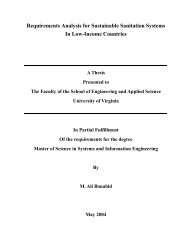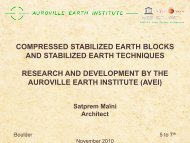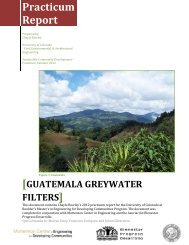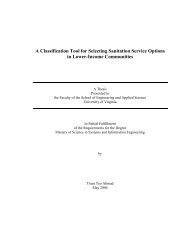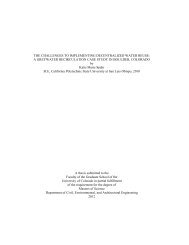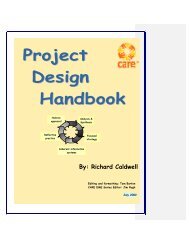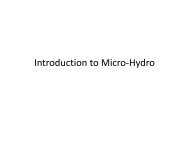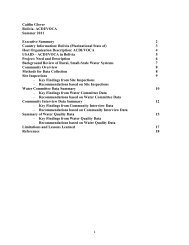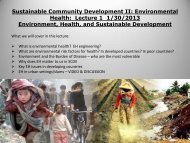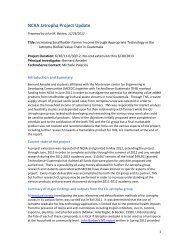SCEBs - University of Colorado Boulder
SCEBs - University of Colorado Boulder
SCEBs - University of Colorado Boulder
You also want an ePaper? Increase the reach of your titles
YUMPU automatically turns print PDFs into web optimized ePapers that Google loves.
This rate was maintained until failure occurred, as evidenced by the stress-strain curve<br />
output from the Instron machine. Failure was defined as the ultimate stress achieved by<br />
compressed earth blocks behaving in a brittle manner.<br />
4.1.3. Results<br />
Displayed below are the results <strong>of</strong> the Unconfined Compression Strength<br />
durability tests. Figures 4.3 - 4.5 show the UCS values <strong>of</strong> the blocks taken at one week<br />
intervals during the initial four week curing phase. One can see that after seven days the<br />
<strong>SCEBs</strong> have reached nearly full strength. Figures 4.6 – 4.8 show the UCS values <strong>of</strong> the<br />
blocks after each saturation cycle. These results did not show an obvious trend <strong>of</strong><br />
decreasing strength with repeated saturation cycles. To address the issue <strong>of</strong> scale effects,<br />
a corrected unconfined compressive strength was calculated based on the analysis<br />
performed in Chapter 5, Section 5.2.2.1. The mini-blocks tested had an aspect ratio <strong>of</strong><br />
approximately 0.4. The UCS values are corrected for a specimen with an aspect ratio <strong>of</strong><br />
2. In nearly every case, the soil mix with a higher proportion <strong>of</strong> clayey soil was superior.<br />
Figure 4.9 shows a typical example <strong>of</strong> deterioration <strong>of</strong> a SCEB made from 25% Amsden<br />
clay by mass after five wetting/drying cycles.<br />
36



